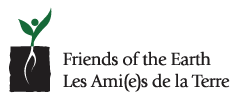New Pesticides in Garden Plants: FOE’s Findings Beyond Neonics
For over a decade, Friends of the Earth’s Bee Cause Campaign called for neonics-free ornamental plants. We tested flowering plants from garden centres and called out those with bee-toxic residues in their plants.
In 2024, Friends of the Earth Canada did a check-in with major garden centres reporting neonics were gone from their supply chains. This achievement took a decade of advocacy to achieve – flower testing in 2015, 2017 and 2018.
Then, FOE decide to do an observational test to sample nectar and pollen, leaves, and soil from roots from plants promoted as pollinator friendly – lavender, butterfly bush, purple cone flower, honeysuckle and blanket flower.
The results were shocking. Yes, the neonics from the past were gone but seven fungicides and seven insecticides showed up across 15 tested samples. Any one of these products can be dangerous to pollinators but no one has considered how lethal a combination from these residues may be.
Garden centres are playing a shell game – allowing their suppliers to switch out neonics for newer systemic pesticides or even pesticides not registered for use in Canada!
They’re greenwashing gardeners with their promotion of “pollinator friendly” plants.
Here are three ways you can help save the bees and other pollinators from pollinator-toxic pesticides.
1. Insist on your right to access important information on pesticides used to help make careful choices of ornamental flowers for your garden. Sign the Gardeners’ Right to Know petition
2. Document Potential Greenwashing – Take photos at garden centres you visit:
– “Pollinator Friendly” promotional signs at garden centres along with the date, name and location of the garden centre.
– “Pollinator Friendly” tags in flower pots – both sides needed along with the date, name and location of the garden centre.
– Send the photos through this link.
3. Question garden centre staff about pesticides used by the nurseries suppliers and about their use on site.
Related Topics:
Combat the Biodiversity Crash by teaching about wild bees and other beneficial insects
Trees for Bees in Canada

